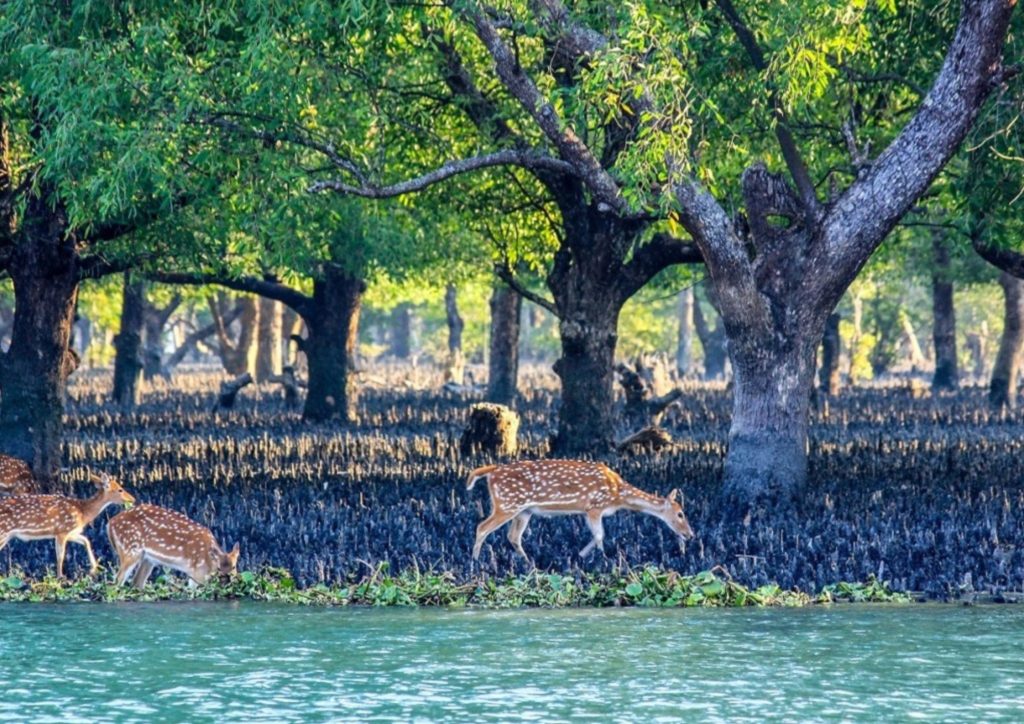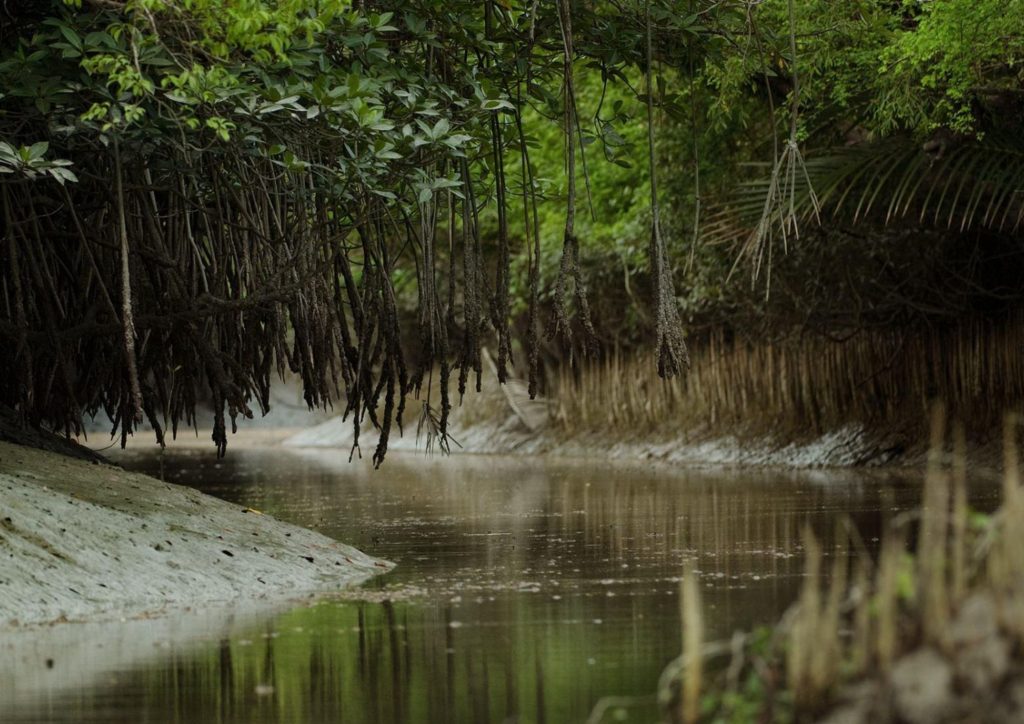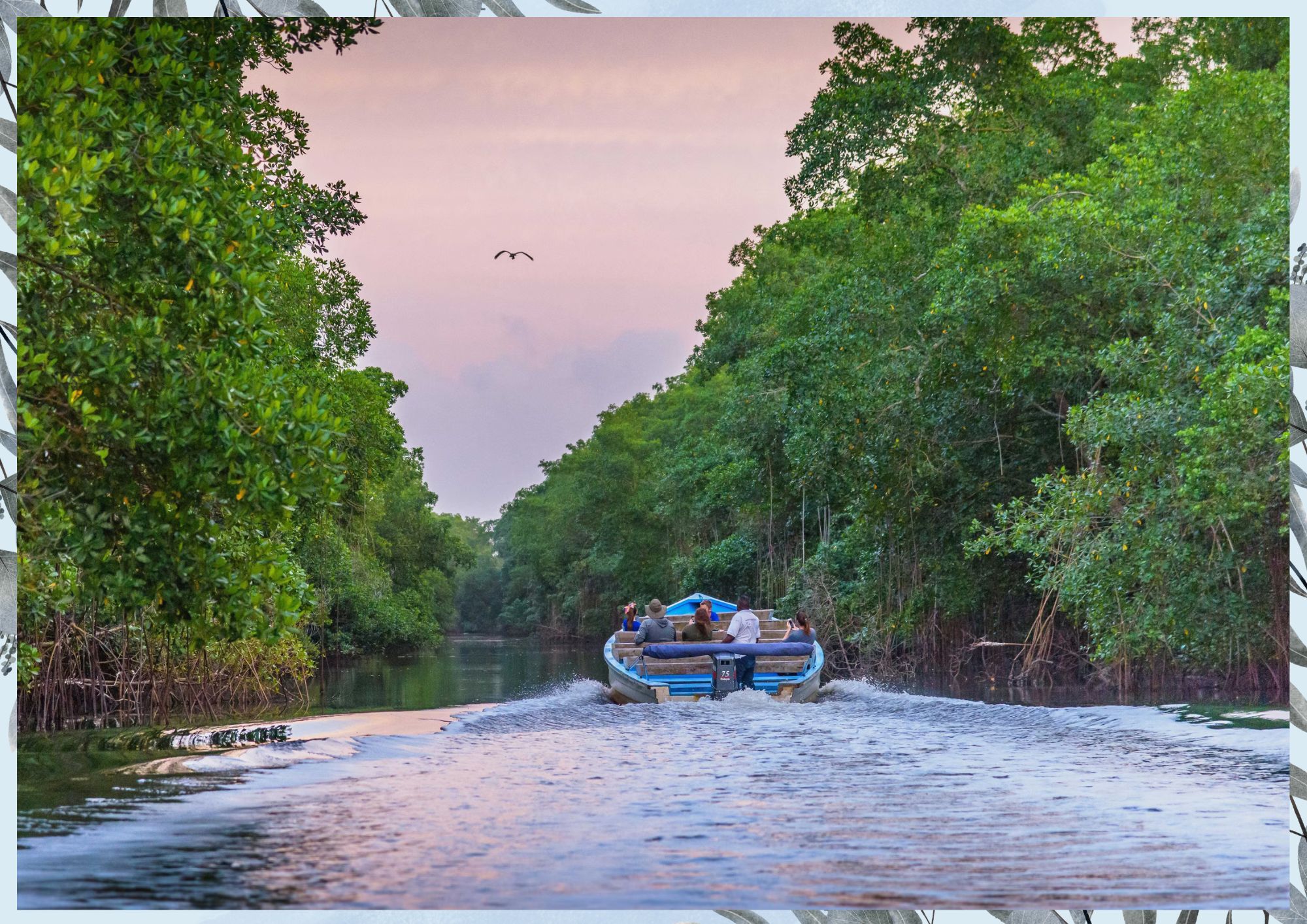The Sundarban Mangrove Forest in Asia
The Sundarban Mangrove Forest, sprawling across the delta formed by the confluence of the Ganges, Brahmaputra, and Meghna rivers in the Bay of Bengal, is one of the most remarkable ecosystems on Earth. Located primarily in Bangladesh and extending into India, this UNESCO World Heritage Site represents a confluence of natural beauty, ecological diversity, and cultural significance. Covering approximately 10,000 square kilometers, it is the largest contiguous mangrove forest in the world. This article delves into every aspect of this ecological treasure, including its geography, biodiversity, cultural importance, challenges, and conservation efforts.
Location and Geographical Spread
In Bangladesh:
The majority of the Sundarban forest lies in Bangladesh, covering approximately 6,017 square kilometers. It is situated in the Khulna, Satkhira, and Bagerhat districts. The Bangladeshi Sundarbans form about 60% of the total forest area. It includes a vast network of rivers, tidal waterways, mudflats, and small islands of salt-tolerant mangrove trees.
The prominent entry points to the Bangladeshi Sundarbans are:
Mongla: A major port town and gateway for forest tours.
Khulna: A nearby city where many eco-tourism activities and expeditions begin.
In India:
The Indian portion of the Sundarban forest covers about 4,267 square kilometers, primarily located in the southern part of West Bengal. This area represents roughly 40% of the Sundarban ecosystem. Key regions in the Indian Sundarbans include:
South 24 Parganas District: Houses popular islands like Sagar Island and Gosaba.
North 24 Parganas District: Features smaller mangrove-covered areas and estuaries.
Major entry points in India are:
Canning: A small town serving as a hub for visitors heading into the forest.
Gosaba: The last inhabited island before the dense forest begins.

Unique Features of the Sundarbans:
Mangrove Ecosystem: The forest is dominated by mangrove species, with the Heritiera fomes (locally known as Sundari tree) being the most prominent. These trees are adapted to survive in saline water and tidal conditions.
Rivers and Waterways: The forest is crisscrossed by hundreds of rivers, creeks, and estuaries, forming a complex hydrological network. Major rivers include the Matla, Bidyadhari, Raimangal, and Passur.
Bengal Tiger Habitat: The Sundarbans is the largest habitat of the endangered Bengal tiger, adapted to the swampy and tidal environment. These tigers are known for their swimming prowess and unique hunting behavior.
The climate is tropical, with hot, humid summers and monsoon rains from June to October. The forest’s hydrology is influenced by the tides of the Bay of Bengal, creating a dynamic and ever-changing landscape. Salinity levels fluctuate with the seasons, shaping the unique composition of flora and fauna.
Biodiversity: A Natural Wonder
The Sundarban forest is home to over 400 species of wildlife, including the Bengal tiger, saltwater crocodiles, spotted deer, wild boars, and a variety of bird species. The forest also supports rich aquatic life, including fish, crabs, and mollusks.
Flora
The forest boasts an impressive diversity of mangrove trees and plants adapted to saline and waterlogged conditions. The Sundari tree dominates, but other species like Gewa (Excoecaria agallocha), Goran (Ceriops decandra), and Keora (Sonneratia apetala) also thrive. These trees play a crucial role in stabilizing the coastline, reducing erosion, and serving as breeding grounds for fish and other marine life.
Fauna
The Sundarban is perhaps most famous for being the home of the elusive Bengal tiger (Panthera tigris tigris), specifically the unique and endangered Sundarban tiger population. These tigers are adept swimmers and have adapted to the challenging mangrove environment.

Other notable wildlife includes:
Mammals: Wild boars, spotted deer, fishing cats, and Indian grey mongooses.
Birds: Over 260 bird species, including the masked finfoot, mangrove whistler, and various herons and egrets.
Reptiles: Estuarine crocodiles, king cobras, and the Indian python.
Marine Life: The forest’s waterways are teeming with fish, shrimp, and crab species. Irrawaddy and Ganges River dolphins are also found in these waters.
Ecological Importance:
The Sundarban plays a vital role in maintaining ecological balance. Its dense mangroves act as a buffer against tropical cyclones and storm surges, protecting millions of people living in surrounding areas. The region also contributes significantly to carbon sequestration, mitigating the impacts of climate change. Furthermore, the mangroves support fisheries and other livelihoods for local communities.
The Sundarban is deeply intertwined with the cultural and spiritual lives of the people living in its vicinity. Local communities have traditionally relied on the forest for fishing, honey collection, and wood gathering. The region is steeped in folklore, with stories of the forest goddess Bonbibi, who is revered as the protector of the forest and its inhabitants. Her tale is a symbol of harmony between humans and nature.
The Sundarban has also been a source of literary inspiration, featuring prominently in works by authors like Rabindranath Tagore and Amitav Ghosh. Its unique landscape and mysterious aura continue to captivate imaginations worldwide.
Furthermore, the mangrove forest acts as a natural barrier against cyclones and storm surges, which are common in the Bay of Bengal. By absorbing the energy of these devastating events, the Sundarbans protects coastal communities, saving countless lives and reducing economic losses. Its dense network of roots stabilizes soil and prevents coastal erosion, offering a natural solution to some of the most pressing environmental challenges.
Economic Benefits
For millions of people living in and around the Sundarbans, the forest is a source of sustenance and income. Fishing, honey collection, and crab farming are among the primary activities that depend on this rich ecosystem. These activities not only support local communities but also contribute to regional and national economies.
In addition, the Sundarbans has untapped potential for eco-tourism, which can generate sustainable income while promoting environmental awareness. With careful management, eco-tourism can provide an alternative livelihood for locals, reducing dependency on forest exploitation.
Climate Change Mitigation
Mangrove forests like the Sundarbans are among the most effective ecosystems for carbon sequestration. They capture and store significant amounts of carbon dioxide, helping to mitigate the effects of climate change. By preserving the Sundarbans, we enhance the planet’s capacity to regulate greenhouse gas levels and combat global warming.
Cultural and Spiritual Value
The Sundarbans is deeply ingrained in the cultural fabric of the region. It is often featured in local folklore, songs, and traditions, serving as a source of inspiration and identity for the people. The forest is also a symbol of resilience, embodying the harmony between humans and nature that has sustained communities for generations.

Challenges and Threats:
Despite its importance, the Sundarban faces numerous challenges that threaten its ecological and cultural integrity.
Climate Change
Rising sea levels due to global warming pose a significant threat to the low-lying Sundarban. Increased salinity and submersion of land are leading to the loss of biodiversity and livelihoods.
Deforestation and Habitat Loss
Illegal logging and encroachment for agriculture and settlements have led to habitat destruction. Mangrove forests are being cleared at an alarming rate, jeopardizing the survival of many species.
Human-Wildlife Conflict
The proximity of human settlements to the forest often results in conflicts, particularly with tigers. Livestock depredation and attacks on humans create tension, undermining conservation efforts.
Pollution
Industrial and agricultural runoff, as well as oil spills from ships, are polluting the waterways, affecting marine life and the health of mangroves.
Conservation Efforts
Recognizing its importance, various initiatives have been undertaken to conserve the Sundarban.
Government Policies
Both India and Bangladesh have designated large parts of the Sundarban as protected areas. The Sundarban National Park in India and the Sundarbans Reserved Forest in Bangladesh are crucial for preserving biodiversity.
International Support
The forest has been recognized as a UNESCO World Heritage Site and a Ramsar Wetland of International Importance. These designations have drawn global attention to its conservation needs.
Community Involvement
Efforts are being made to involve local communities in conservation, recognizing that their well-being is closely linked to the forest’s health. Initiatives like eco-tourism and sustainable resource management aim to reduce dependence on destructive activities.
Scientific Research
Research institutions and NGOs are studying the Sundarban to better understand its ecology and develop strategies for its preservation. Projects include tiger monitoring, mangrove restoration, and climate resilience programs.

Tourism in the Sundarban
Eco-tourism is emerging as a sustainable way to experience the Sundarban’s beauty while supporting its conservation. Visitors can explore the forest through guided boat tours, observing wildlife, and learning about mangrove ecology. Key attractions include:
Tiger Reserves: Sightings of the Bengal tiger, although rare, are a major draw.
Wildlife Watching: The chance to see crocodiles, deer, and various bird species.
Scenic Waterways: A labyrinth of rivers and creeks offering stunning views.
To ensure minimal impact on the environment, authorities enforce strict guidelines for tourism activities.

The Future of the Sundarban
The Sundarban Mangrove Forest is a testament to nature’s resilience and beauty. However, its future depends on collective action to address the myriad challenges it faces. Governments, local communities, and international organizations must work together to strike a balance between conservation and development.
Innovative solutions, such as mangrove afforestation, sustainable livelihoods, and climate-adaptive infrastructure, offer hope for the Sundarban. By safeguarding this ecological treasure, we protect not only the biodiversity it harbors but also the millions of people who depend on its resources.
The Sundarban reminds us of the intricate connections between humans and nature. Its survival is not just a regional or national concern but a global responsibility. Through awareness, cooperation, and action, we can ensure that this “beautiful forest” continues to thrive for generations to come. Click here
Conclusion
The Sundarbans mangrove forest is more than a natural wonder; it is a vital resource that supports life in myriad ways. Its ecological, economic, and cultural benefits highlight the importance of protecting this fragile ecosystem. However, the Sundarbans faces threats from deforestation, climate change, and human encroachment. Immediate and sustained conservation efforts are essential to ensure that this invaluable treasure continues to thrive for future generations. Protecting the Sundarbans is not just a regional responsibility—it is a global imperative.

